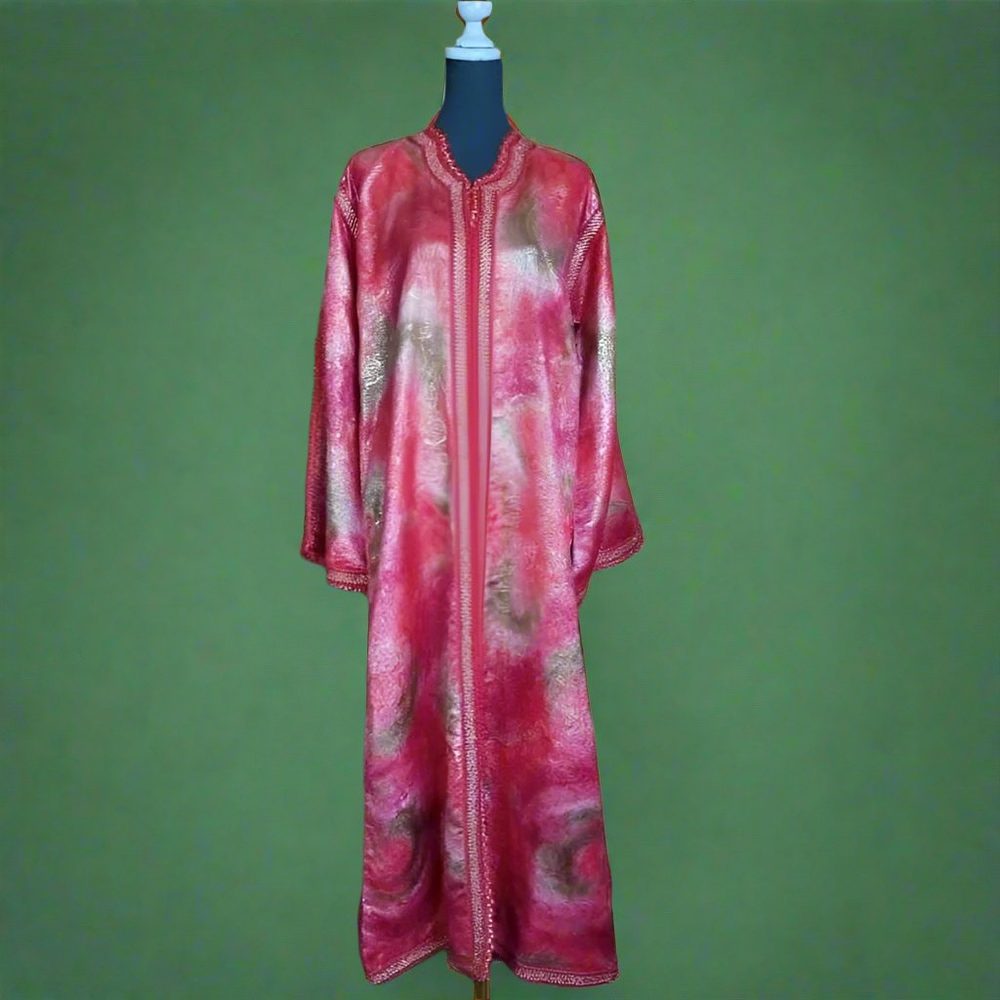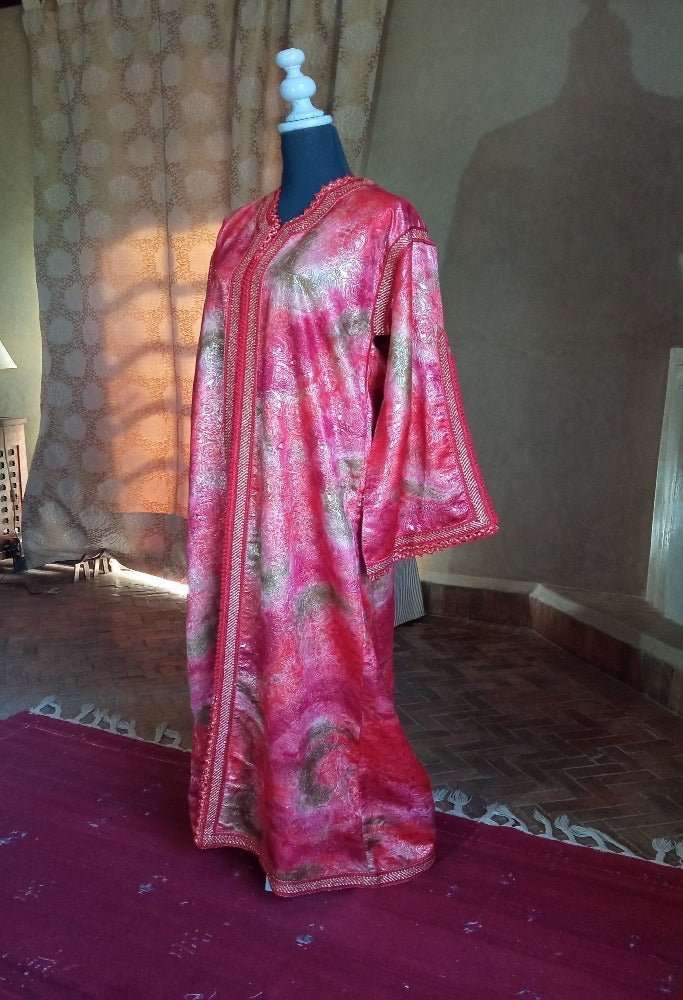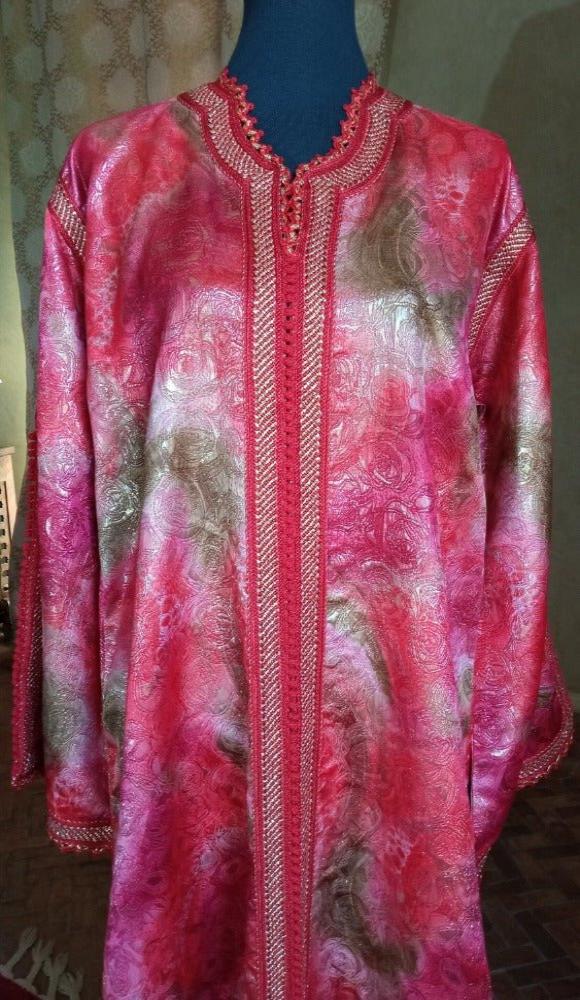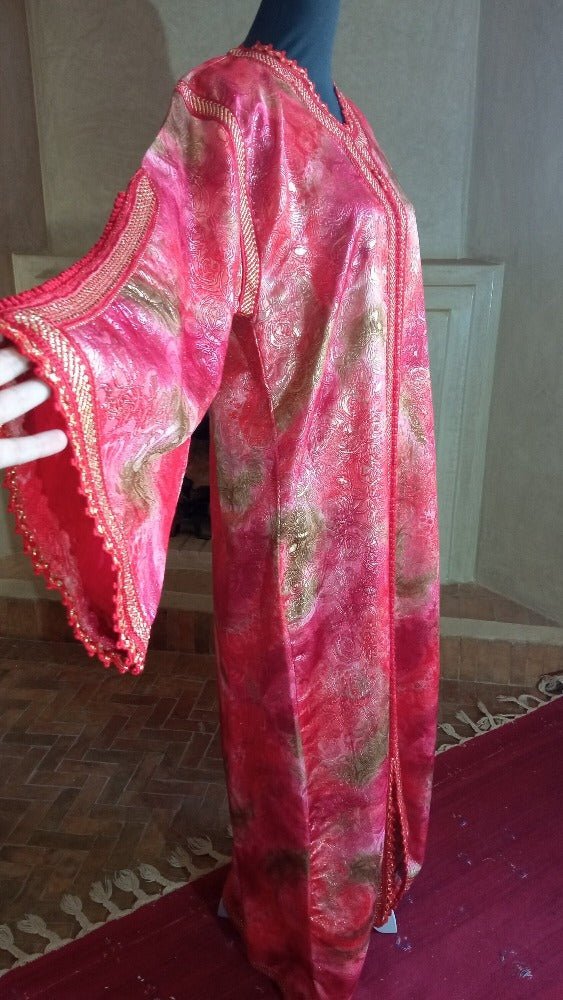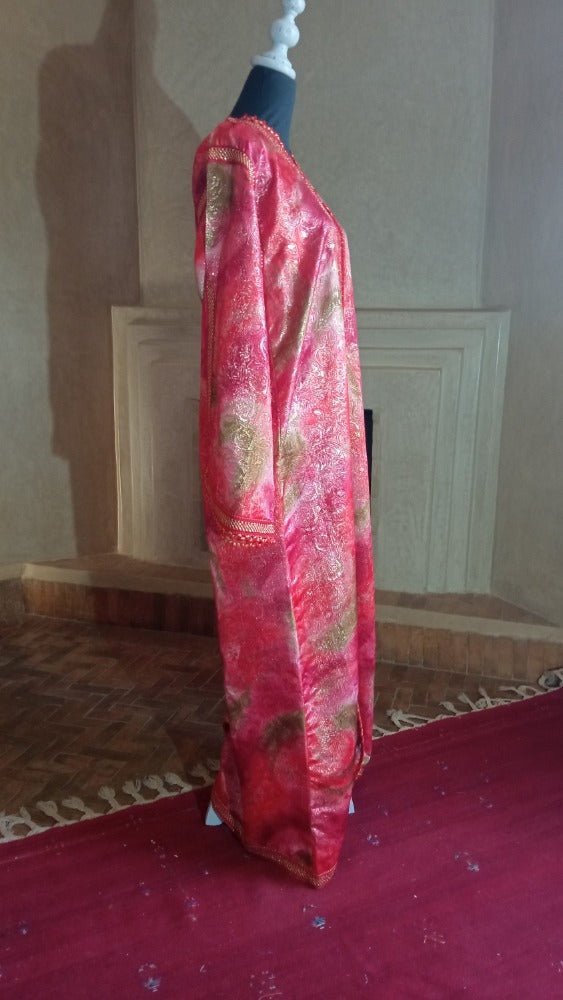
Why Are Moroccan Kaftans So Expensive? It's the Embroidery!
From the geometric precision of Fez embroidery to the luxurious gold-thread work of Maâlem, these techniques have been passed down through generations of skilled artisans. Below, we explore the various embroidery techniques that make Moroccan kaftans timeless masterpieces.
Tarz El Fassi (Fez Embroidery)
Tarz El Fassi, or Fez embroidery, is one of Morocco's most renowned embroidery styles. It originates from Fez, a city known for its deep cultural and artistic heritage. This embroidery style is characterized by its meticulous, symmetrical patterns that require high precision.
- Materials Used: Fine silk threads in deep blue, gold, and red hues. These colors are significant in Moroccan culture, representing nobility, prosperity, and protection.
- Techniques: Artisans use single-thread embroidery, ensuring that every stitch is executed with extreme care. The process is labor-intensive and demands a great deal of patience and expertise.
- Common Patterns: Floral designs, arabesques, and geometric motifs are most commonly seen in this type of embroidery.
- Application: Fez embroidery is primarily found on silk and velvet kaftans, often worn on special occasions, such as weddings and royal ceremonies.
Tarz Meknessi (Meknes Embroidery)
Meknes embroidery is similar to Fez embroidery but is often more elaborate and detailed. Originating from the imperial city of Meknes, this embroidery technique is known for its richness and opulence.
- Materials Used: Gold and silver threads, often woven into rich fabrics like silk and brocade.
- Techniques: The embroidery is applied with a technique called "Tarbiaa," where metallic threads are skillfully woven into the fabric to create a shimmering effect.
- Common Patterns: Star shapes, floral motifs, and interwoven patterns that showcase Moroccan artistry.
- Application: Commonly found on wedding kaftans and formal dresses, Meknes embroidery adds a regal touch to any garment.
Randa (Bridged Lace Embroidery)
Randa is a unique embroidery technique that creates lace-like patterns by interweaving threads between fabric layers. This delicate, openwork embroidery is both elegant and intricate.
- Materials Used: Cotton, silk, or metallic threads, often complemented with sequins and beads.
- Techniques: Randa embroidery is done by looping and knotting the threads to create an airy, lace-like appearance. Some designs incorporate beads and pearls for added sophistication.
- Common Patterns: Floral, lattice, and abstract designs that enhance the fabric’s texture.
- Application: Frequently used in bridal kaftans, Randa embroidery adds a soft, romantic touch to garments.
Tarz Rabati (Rabat Embroidery)
Rabat embroidery reflects the artistic influences of Morocco’s capital city. It is a blend of traditional and modern elements, making it a versatile embroidery style.
- Materials Used: Vibrant silk and gold threads woven into fine fabrics.
- Techniques: Rabat embroidery is less rigid than Fez embroidery, allowing for more fluid, artistic expressions.
- Common Patterns: Modern floral motifs and traditional Moroccan geometric shapes.
- Application: This style is often seen in contemporary wedding kaftans and special occasion dresses.
Maâlem (Gold and Silver Thread Embroidery)
Maâlem embroidery is one of the most prestigious techniques in Moroccan textile art. It is exclusively used in high-end kaftans and requires the expertise of master artisans, known as Maâlems.
- Materials Used: Pure gold and silver threads, sometimes mixed with silk for added depth.
- Techniques: Metallic threads are carefully woven into intricate patterns, requiring specialized craftsmanship.
- Common Patterns: Arabesque, floral, and symmetrical motifs, often featuring elaborate detailing around the neckline and cuffs.
- Application: Maâlem embroidery is used in royal kaftans and ceremonial outfits, making them luxurious and unique.
Zouak (Thread and Bead Embroidery)
Zouak embroidery is a combination of traditional thread embroidery with decorative beadwork, adding depth and dimension to the fabric.
- Materials Used: Silk or cotton threads, along with beads, pearls, and sequins.
- Techniques: Intricate hand embroidery combined with bead placement to create multi-dimensional textures.
- Common Patterns: Symmetric and floral designs that give an embellished look.
- Application: Zouak embroidery is widely used in festive kaftans and traditional Moroccan dresses.
Tarz Tétouani (Tetouan Embroidery)
Tetouan embroidery carries strong Andalusian influences, reflecting the city's rich history and connection to Spain.
- Materials Used: Silk threads in soft pastel shades, often paired with metallic accents.
- Techniques: This style emphasizes fine, delicate needlework that requires great skill and precision.
- Common Patterns: Floral vines, arabesques, and lace-inspired motifs.
- Application: Tetouan embroidery is commonly used in bridal kaftans and elegant formal wear.
Sefifa & Aâkad (Braided Silk Embroidery)
Sefifa and Aâkad are essential elements of Moroccan kaftans, adding a touch of sophistication to the garment’s finishing details.
- Materials Used: Silk braiding, decorative cords, and handmade buttons (Aâkad).
- Techniques: Sefifa involves braiding silk into elaborate outlines or trims, while Aâkad consists of small, decorative buttons sewn onto the garment.
- Common Patterns: Straight and curved lines that enhance the kaftan’s overall structure.
- Application: Used in both traditional and modern kaftans, these details provide a polished, refined appearance.
Conclusion
Moroccan kaftan embroidery techniques are a testament to the country’s rich textile heritage. Each technique tells a story, showcasing the craftsmanship of artisans who have perfected their skills over centuries. Whether it is the precise needlework of Fez embroidery, the gold-thread luxury of Maâlem, or the delicate lace of Randa, these techniques elevate Moroccan kaftans to the status of wearable art. By preserving and celebrating these embroidery traditions, Morocco continues to honor its cultural identity and artistic excellence.



